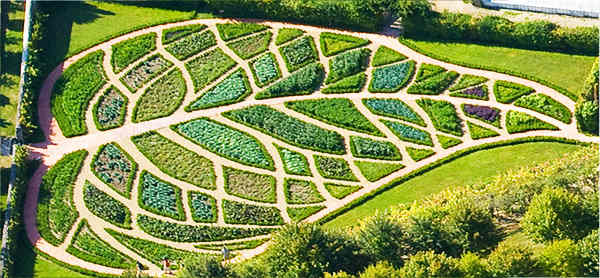by Tess Pennington
We tend to look to God as a source of all healing. It is said that He has provided all that we will ever need:
“the fruit of it shall be for eating and leaf of it for healing…” (Ezekiel 47:12)
Herbs are a wondrous thing. They not only assist in flavoring dishes and filling the air with delightful aromas, but they also hold medicinal properties that promote healing. Those of you who have herbal gardens of your own, no doubt have a few of these herbal friends already planted. Many of the plants listed below are also listed in my Top 10 Medicinal Herbs that should be in every garden. However, it seems that there are a few more worth mentioning.
Our Herbal Friends
- Aloe Vera– Antibacterial, antifungal, antiviral, wound and burn healer, natural laxative, soothes stomach, helps skin ailments.
- Basil– Powerful antispasmodic, antiviral, anti-infectious, antibacterial, soothes stomach.
- Black Cohosh– Relieves menopausal hot flashes, relieves menstrual cramps, helps circulatory and cardiovascular disorders, lowers blood pressure, reduces cholesterol, useful for nervousness and stress. Note: Do not use during pregnancy.
- Black Walnut– Good for eliminating parasites, good for fungal infections, good for warts and poison ivy, aids digestion.
- Cinnamon– It has been proven that 99.9% of viruses and bacteria can not live in the presence of cinnamon. So it makes a great antibacterial and antiviral weapon.
- Cayenne– Catalyst for other herbs, useful for arthritis and rheumatism (topically and internally), good for colds, flu viruses, sinus infection and sore throat, useful for headache and fever, aids organs (kidneys, heart, lungs, pancreas, spleen and stomach, increase thermogenesis for weight loss.
- Clove Bud– Improves the immune system, they are also an antioxidant and doubles as an antibacterial and antimicrobial fighter.
- Cypress – The therapeutic properties of cypress oil are astringent, antiseptic, antispasmodic, deodorant, diuretic, haemostatic, hepatic, styptic, sudorific, vasoconstrictor, respiratory tonic and sedative.
- Dandelion– Helpful for PMS, good for menopause, increases ovarian hormones.
- Echinacea (coneflower)– Boosts white blood cell production, immune system support, anti-inflammatory and antiviral properties, good for colds, flu and infection. Note: Use no more than two weeks at a time. Do not use if you are allergic to sunflowers or related species.
- Eucalyptus– Anti-infectious, antibacterial and antiviral.
- Garlic– Helps fight infection, detoxifies the body, enhances immunity, lowers blood fats, assists yeast infections, helps asthma, sinusitis, circulatory problems and heart conditions.
- German Chamomile– Helps stress, anxiety and insomnia, good for indigestion, useful for colitis and most digestive problems, effective blood cleanser and helps increase liver function and supports the pancreas. Improves bile flow from the liver, it is good for healing of the skin that might come from a blistering chemical agent.
- Geranium– Dilates bile ducts for liver detoxification, antispasmodic, stops bleeding, anti-infectious, antibacterial.
- Ginger– Helps nausea, motion sickness and vomiting, useful for circulatory problems, good for indigestion, and is also an effective antioxidant.
- Lavender– Assists with burns, antiseptic, used as a stress reliever, good for depression, aids skin health and beauty.
- Lemon– Is known for its antiseptic properties, Essential Science Publishing says that: According to Jean Valnet, M.D. the vaporized essence of lemon can kill meningococcal bacteria in 15 minutes, typhoid bacilli in one hour, Staphylococcus aureus in two hours and Pneumococcus bacteria within three hours. Lemon also improves micro-circulation, promotes white blood cell formation, and improves immune function.
- Marjoram– Anti-infectious, antibacterial, dilates blood vessels, regulates blood pressure, soothes muscles.
- Marshmallow– Aids bladder infections, diuretic (helps fluid retention), helps kidney problems, soothes coughs, sore throats, indigestion, and as a topical agent it is said to be anti-inflammatory, antimicrobial and wound-healing.
- Melissa– Assists in issues with the nervous system, blisters, and has antimicrobial properties.
 Mullein– Can be used as a laxative, good for asthma and bronchitis, useful for difficulty breathing, helps hay fever.
Mullein– Can be used as a laxative, good for asthma and bronchitis, useful for difficulty breathing, helps hay fever.- Myrrh– Anti-infectious, antiviral, soothes skin conditions and supports immune system. Also an antispasmodic that helps to reduce spasming due to spasms caused by nerve agents.
- Oregano– is a powerful antibiotic and has been proven to be more effective in neutralizing germs than some chemical antibiotics. It has been effective against germs like Staphylococcus aureas, Escherichia coli, Yersinia enterocolitica and Pseudomonas aeruginosa.
- Pine– Antidiabetic, cortisone-like, severe infections, hypertensive
- Rosemary– Antiseptic, Antibacterial, Cleansing and detoxes the body. Supports the liver and combats cirrhosis.
- Rosewood– Anti-infectious, antibacterial, and antiviral.
- Sage– Used in anxiety, nervous disorders, as astringent, in abdominal disorders, anti inflammatory.
- Spearmint– To calm the nervous system and assist with bronchial issues.
- Tea Tree– Disinfectant, antibacterial, anti-fungal, burns, good for all skin conditions.
- Thyme– Thyme is one of the oldest herbs on record and is another immunity booster and cognitive aid. The International Journal of Food Microbiology as well as other institutions found that 92 percent of Gram negative and positive bacterial strains could be killed using cinnamon, thyme or clove essential oil. Here are some other health benefits of thyme.
Related: An Awesome 72 Square-Feet SHTF Medicinal Garden Plan
Perhaps it is time that we begin taking more proactive steps in our physical well being. In the book, Natural Health Remedies: An A-Z Family Guide it states that natural medicine does not simply seek to suppress symptoms with drugs and so forth, but it attempts to discover and eliminate the root cause of disease. Even further, the author suggests that natural medicine teaches not only the treatment of disease but also its prevention by instilling dietary and lifestyle habits that promote health.
Tess Pennington is the author of The Prepper’s Blueprint (the most comprehensive guide that uses real-life scenarios to help you prepare for any disaster). Tess is also the author of the highly rated Prepper’s Cookbook, which helps you to create a plan for stocking, organizing and maintaining a proper emergency food supply and includes over 300 recipes for nutritious, delicious, life-saving meals. Visit her web site at ReadyNutrition.com for an extensive compilation of free information on preparedness, homesteading, and healthy living.
You may also like:
This Bug Will Kill Most Americans During The Next Crisis (Video)
This Common Driveway Weed is One of Nature’s Most Powerful Survival Plants
If You See This Plant, Whatever You Do Don’t Touch It!























Great and informative article. Thank you.
Sage Herb and Milk as a Cure-All: #91. Feed a sick baby on cow’s milk with sage tea mixed in it.” “This was called “quilling” and was used by some of the oldest settlers of the state of Nebraska. Mrs. H. O. Skiles of Lincoln said that her grandmother fed her six weeks old granddaughter on this prescription. She asserted that it cured her after doctors had said she could not live. From the book “Nebraska Folk Cures Published 1935”